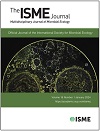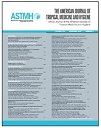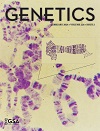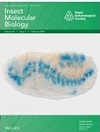Latest Publications
Coordinated transcriptional response to environmental stress by a Synechococcus virus
 Branko Rihtman, Alberto Torcello-Requena, Alvetina Mikhaylina, Richard J Puxty, Martha RJ Clokie, Andrew D Millard, David J Scanlan
Branko Rihtman, Alberto Torcello-Requena, Alvetina Mikhaylina, Richard J Puxty, Martha RJ Clokie, Andrew D Millard, David J Scanlan
Phosphorus (P) is a major abiotic control on the marine cyanobacterium Synechococcus. Some viruses infecting Synechococcus have acquired, from their host, a gene encoding a P substrate binding protein (PstS), thought to improve virus replication under phosphate starvation. Yet, pstS is uncommon amongst cyanobacterial viruses. Thus, we asked how infections with viruses lacking PstS are affected by P scarcity. We show that production of infectious virus particles of such viruses is reduced in low P conditions. Our data shows how phage genomes, lacking obvious P-stress related genes, have evolved to exploit their host’s environmental sensing mechanisms to coordinate their own gene expression in response to resource limitation.
Postintervention Immunological and Entomological Survey of Lymphatic Filariasis in the City of Olinda, Brazil, 2015-2016
 Anita Ramesh, Paula Oliveira, Mary Cameron, Priscila M S Castanha, Thomas Walker, Audrey Lenhart, Lucy Impoinvil, Neal Alexander, Zulma Medeiros, André Sá, Abraham Rocha, Wayner V Souza, Amélia Maciel, Cynthia Braga
Anita Ramesh, Paula Oliveira, Mary Cameron, Priscila M S Castanha, Thomas Walker, Audrey Lenhart, Lucy Impoinvil, Neal Alexander, Zulma Medeiros, André Sá, Abraham Rocha, Wayner V Souza, Amélia Maciel, Cynthia Braga
Lymphatic filariasis (LF) is a leading cause of disability due to infectious disease worldwide. The Recife Metropolitan Region (RMR) is the only remaining focus of LF in Brazil, where the parasite Wuchereria bancrofti is transmitted solely by the mosquito Culex quinquefasciatus. This study reports the results of transmission assessment surveys and molecular xenomonitoring in the city of Olinda, RMR, after nearly 15 years (2015-2016) of interventions for LF elimination. Participants were screened for W. bancrofti antigen via immunochromatographic card tests (ICT), and all 1,170 children from MDA areas and the entire population sample of 990 residents in non-MDA areas were ICT negative. In MDA areas, a total of 3,152 female Cx. quinquefasciatus mosquitoes in 277 households were collected via aspiration. RT-qPCR of 233 pools of mosquitos were negative for W. bancrofti RNA; an independent reference laboratory confirmed these results. These results provide evidence that LF transmission has been halted in this setting.
Unveiling the potential of Daldinia eschscholtzii MFLUCC 19-0629 through bioactivity and bioinformatics studies for enhanced sustainable agriculture production
 Brooks S, Weaver JA, Klomchit A, Alharthi SA, Onlamun T, Nurani R, Vong TK, Alberti F and Greco C
Brooks S, Weaver JA, Klomchit A, Alharthi SA, Onlamun T, Nurani R, Vong TK, Alberti F and Greco C
Endophytic fungi constitute a rich source of secondary metabolites that can be manipulated to produce desirable novel analogs for combating current agricultural challenges for crop production, especially controlling plant disease. The endophytic fungus Daldinia eschscholtzii MFLUCC 19-0629, was newly isolated from tropical ancient plants, Oncosperma sp., and displays a broad-spectrum of antifungal and antibacterial activities against several plant pathogens. The discovery that D. eschscholtzii MFLUCC 19-0629 has a broad spectrum of antimicrobial activity against seven major plant pathogenic microorganisms relevant to crop production and its complete genome sequence carries immense importance in the advancement of novel microbial biocontrol agents (MBCAs). This also unveils the prospect of uncovering new compounds that could be utilized for sustainable agriculture and pharmaceutical purposes.
The contribution of an X chromosome QTL to non-Mendelian inheritance and unequal chromosomal segregation in A. freiburgense
 Talal Al-Yazeedi, Sally Adams, Sophie Tandonnet, Anisa Turner, Jun Kim, Junho Lee, Andre Pires-daSilva
Talal Al-Yazeedi, Sally Adams, Sophie Tandonnet, Anisa Turner, Jun Kim, Junho Lee, Andre Pires-daSilva
Auanema freiburgense is a nematode with males, females, and selfing hermaphrodites. When XO males mate with XX females, they typically produce a low proportion of XO offspring because they eliminate nullo-X spermatids. This occurs because of an unequal distribution of essential cellular organelles during sperm formation. Intriguingly, the interbreeding of two A. freiburgense strains results in hybrid males capable of producing viable nullo-X sperm. Consequently, when these hybrid males mate with females, they yield a high percentage of male offspring. To uncover the genetic basis of nullo-spermatid elimination and X- chromosome drive, we generated a genome assembly for A. freiburgense, and genotyped the intercrossed lines. This analysis identified a Quantitative Trait Locus spanning several X chromosome genes linked to the non-Mendelian inheritance patterns observed in A. freiburgense. This finding provides valuable clues to the underlying factors involved in asymmetric organelle partitioning during male meiotic division and thus non-Mendelian transmission of the X chromosome and sex ratios.
The long and short of it: benchmarking viromics using Illumina, Nanopore and PacBio sequencing technologies
 Ryan Cook, Nathan Brown, Branko Rihtman, Slawomir Michniewski, Tamsin Redgwell, Martha Clokie, Dov J. Stekel, Yin Chen, David J. Scanlan, Jon L. Hobman, Andrew Nelson, Michael A. Jones, Darren Smith and Andrew Millard
Ryan Cook, Nathan Brown, Branko Rihtman, Slawomir Michniewski, Tamsin Redgwell, Martha Clokie, Dov J. Stekel, Yin Chen, David J. Scanlan, Jon L. Hobman, Andrew Nelson, Michael A. Jones, Darren Smith and Andrew Millard
ecology. Long-read sequencing and hybrid assembly approaches that combine long- and short-read technologies are now being widely implemented in bacterial genomics and metagenomics. However, the use of long-read sequencing to investigate viral communities is still in its infancy. While Nanopore and PacBio technologies have been applied to viral metagenomics, it is not known to what extent different technologies will impact the reconstruction of the viral community. Thus, we constructed a mock bacteriophage community of previously sequenced phage genomes and sequenced them using Illumina, Nanopore and PacBio sequencing technologies and tested a number of different assembly approaches. Overall the best approach was assembly by a combination of Illumina and Nanopore reads, which reduced error rates to levels comparable with short-read-only assemblies. When using a single technology, Illumina only was the best approach. These findings will provide a starting point for others in the choice of reads and assembly algorithms for the analysis of viromes.
Genome assembly and transcriptomic analysis to elucidate the ability of Nasonovia ribisnigri to break host plant resistance
 Dion Garrett, Graham Teakle, Rosemary Collier, James R. Bell, Sergio Cerezo-Medina, Ramiro Morales-Hojas
Dion Garrett, Graham Teakle, Rosemary Collier, James R. Bell, Sergio Cerezo-Medina, Ramiro Morales-Hojas
The currant-lettuce aphid (Nasonovia ribisnigri (Hemiptera: Aphididae) (Mosley)) is a cosmopolitan pest of outdoor lettuce. Until recently, the use of resistant cultivars was an effective method for managing N. ribisnigri. A resistant cultivar containing a single gene (Nr-locus), introduced in the 1980s, conferred complete resistance to feeding. Overreliance of this Nr-locus in lettuce resulted in N. ribisnigri's ability to break resistance mechanism. Our work attempts to understand which candidate gene(s) are associated with this resistance-breaking mechanism. We present two de novo draft assembles for N. ribisnigri genomes, corresponding to both avirulent (Nr-locus susceptible) and virulent (Nr-locus resistant) biotypes.. Out of the 18,872 differentially expressed genes, a single gene/locus was identified in N. ribisnigri that was shared between two resistant-breaking biotypes. This locus was further explored and validated in Real-Time Quantitative Reverse Transcription PCR (qRT-PCR) experiments and has predicted localisations in both the cytoplasm and nucleus. This is the first study to provide evidence that a single gene/locus is likely responsible for the ability of N. ribisnigri to overcome the Nr-locus resistance in the lettuce host.
